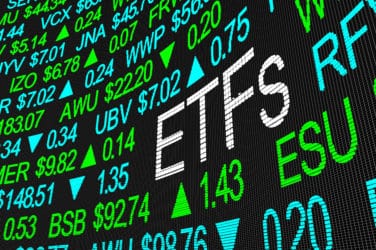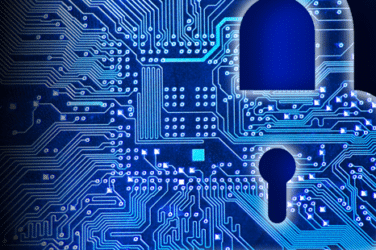
With Natacha Dezert, Blockchain & Digital Assets Program Manager, and Aman Mehta, Sales Director and Digital Assets Lead, Asia Pacific, BNP Paribas Securities Services
The digital landscape has recently begun to mature, broadening beyond cryptocurrencies and their underlying technologies to include other assets. It now includes other assets such as security tokens, which have a much closer alignment to institutional investment mandates and fiduciary obligations. The global digital asset ecosystem reached $2.1 trillion as of Q4 2021 – higher than the GDP of Italy or Canada.
Amid this evolution, providers must minimise the impacts of an extended transition period where traditional and digital assets will co-exist without being integrated. Financial intermediaries who can offer a seamless and consolidated service across these assets will be well-positioned.

In a recent podcast “Digital Assets: Global Trends for Institutional Investors” with Senior Writer Shanny Basar from GlobalTrading, Natacha Dezert, Blockchain & Digital Assets Program Manager for BNP Paribas Securities Services described how she is observing a growing interest and participation from institutional clients. These are mainly from asset owners and asset managers looking to invest in digital assets and integrate them into their portfolios as well as corporates and issuers interested in tokenisation.
Dezert said: “These players are moving from proof of concepts to live experimentations with increasing complexity, in order to confirm the expected benefits and prepare their organisations for the future.”
In fact, a 2020 report from Organisation for Economic Co-operation and Development (OECD) titled “Tokenisation of Assets and Potential Implications for Financial Markets” foreshadowed the growth in asset digitisation, adding that “blockchain technology had the potential to challenge the current construct of financial markets, affecting infrastructure and participants alike.”
Aman Mehta, Sales Director and Digital Assets Lead for BNP Paribas Securities Services in Asia Pacific told GlobalTrading that with increased focus on digital assets from institutional clients, he believes traditional and digital assets will eventually co-exist, each bringing their own value.
BNP Paribas Securities Services aims to create interoperability between different distributed ledgers, building services on top of them to bring enhanced value to clients while also continuing to invest in capabilities to support traditional assets.
“It is our job to provide an ecosystem for our clients to easily access and hold such assets,” Mehta added. “We are working hard with market infrastructures, exchanges, fintechs and our clients to bridge the gap between traditional and digital assets. We’re looking at building a platform to connect with strong solutions for the emerging digital landscape.”

A May 2022 report from consultancy Oliver Wyman “Navigating Crypto: How Banks and Other Financial Intermediaries Can Integrate Crypto Assets”, said there is a near-term opportunity for banks and other traditional intermediaries to meet demand from their customer base for digital assets alongside traditional assets.
“If digital assets continue to develop, banks and other intermediaries that assume this role will become core members of the digital asset ecosystem and will be well placed to bring other digital asset innovations to the mass market, possibly including DeFi (decentralised finance) credit pools, stablecoins or central bank digital currency (CBDC)-denominated transactions, or NFT wallets and marketplaces,” said the report.
Dezert said that compared to traditional assets, digital assets have intrinsic characteristics (programmability/smart contacts, ownership/data recorded on a decentralised digital ledger shared by counterparts instead of on several private ledgers maintained by various intermediaries), which she sees as great opportunities to bring efficiencies and enhance existing models and services.
She continued that BNP Paribas Securities Services started experimenting with proof of concepts of blockchain and digital assets a number of years ago to gain practical expertise and knowledge; to adapt controls, procedures and processes, and prepare for the new asset classes in close collaboration with clients, counterparts, market authorities and regulators.
“We have laid solid foundations and built capabilities to offer digital asset services in a number of areas: as a custodian, to be able to manage our clients’ wallets and private keys, and as a depositary, fund administrator and transfer agent for our asset manager/asset owner clients.”
“We are also very active around cash on chain, being involved in central bank digital currency programs and in a commercial bank digital currency initiative,” she added.
TECHNOLOGY
In 2020, the OECD predicted that the adoption of asset tokenisation at a large scale would face several challenges related to the underlying technology itself while interoperability between different networks needs to be secured for connectivity between markets to be allowed.
Supporting this, Oliver Wyman found that banks and other financial institutions will have to assemble technology infrastructure to capitalise on digital opportunities either in-house or in partnership with multiple service providers.
BNP Paribas Securities Services responded by saying it believes it is important to partner with fintechs specialising in digital assets to provide clients with the best of both worlds.
Recently, BNP Paribas Securities Services has selected two major fintechs – Fireblocks and METACO – to develop its digital asset custody offering and help clients issue, transfer and safekeep regulated digital assets efficiently and securely. These partnerships position both banks and custodians to be a one-stop-shop for clients by providing seamless, consolidated services across asset classes and minimising the impacts of clients having to handle traditional and digital asset types in parallel. “Fintechs have the technological knowledge and expertise and allow us to connect to blockchains with agility and flexibility in a very fast-moving environment, while we have the expertise and credibility in regulation, compliance, risk management and the knowledge and understanding of our clients’ needs and their trust,” said Dezert.
“However, significant barriers to broader adoption of digital assets remain including the current lack of technological standards, the lack of interoperability between the various blockchains and the absence of widely adopted and recognised means of payment and settlement on chain,” she said.
The Oliver Wyman report continued that service providers will be the main way through which banks and other intermediaries access digital assets capabilities as this mitigates the complexity and fixed costs of developing in-house capabilities and reduces the management burden.
REGULATION
Regulations are a prerequisite for the development of the digital assets markets.
The 2022 OECD report stated that “policy makers have a role in ensuring that tokenised markets are consistent with regulatory aims of promoting financial stability, protecting financial consumers, and ensuring market integrity.”
“Potential gaps in existing regulatory frameworks need to be identified and addressed, and regulatory and legal ambiguity around asset tokenisation addressed, as a stepping-stone to the safe development and use of tokenisation by market participants.”
Dezert agreed that regulators are now intensely focused on digital assets, with legislation such as the European Union’s MiCA (Markets in Crypto Assets) regulation aiming to provide harmonised rules across the region.
Dezert also told GlobalTrading that BNP Paribas focuses its efforts on digital assets within a clear regulatory framework, allowing it to provide services to clients with the requisite level of safety and protection.
Mehta added that Asia Pacific is more fragmented than Europe or the US, so there is a race between different markets to position themselves as the digital asset and distributed ledger technology (DLT) leader. He said: “Where we have to see a bit more movement is a better-defined regulatory environment.”
Dezert said regulation providing more certainty to market participants will open the door to their real entrance and participation in digital assets markets, together with the appearance of cash on-chain capabilities especially CBDCs.
THE SHIFT TOWARD INTEGRATION
“The timing and nature of a wider disruption are not clear, but we definitely believe that digital assets should build up over the next few years, creating great opportunities for financial innovation and new, reshaped business and operating models over time,” Dezert said.
Dezert concluded that digital assets should provide many advantages and benefits over the longer term, but they will increase complexity for the near term, as traditional and digital assets will co-exist for an extended timeframe. Banks and other financial intermediaries will need to manage both asset types in parallel for an extended transition period, as they shift along the path to seamless integration.






